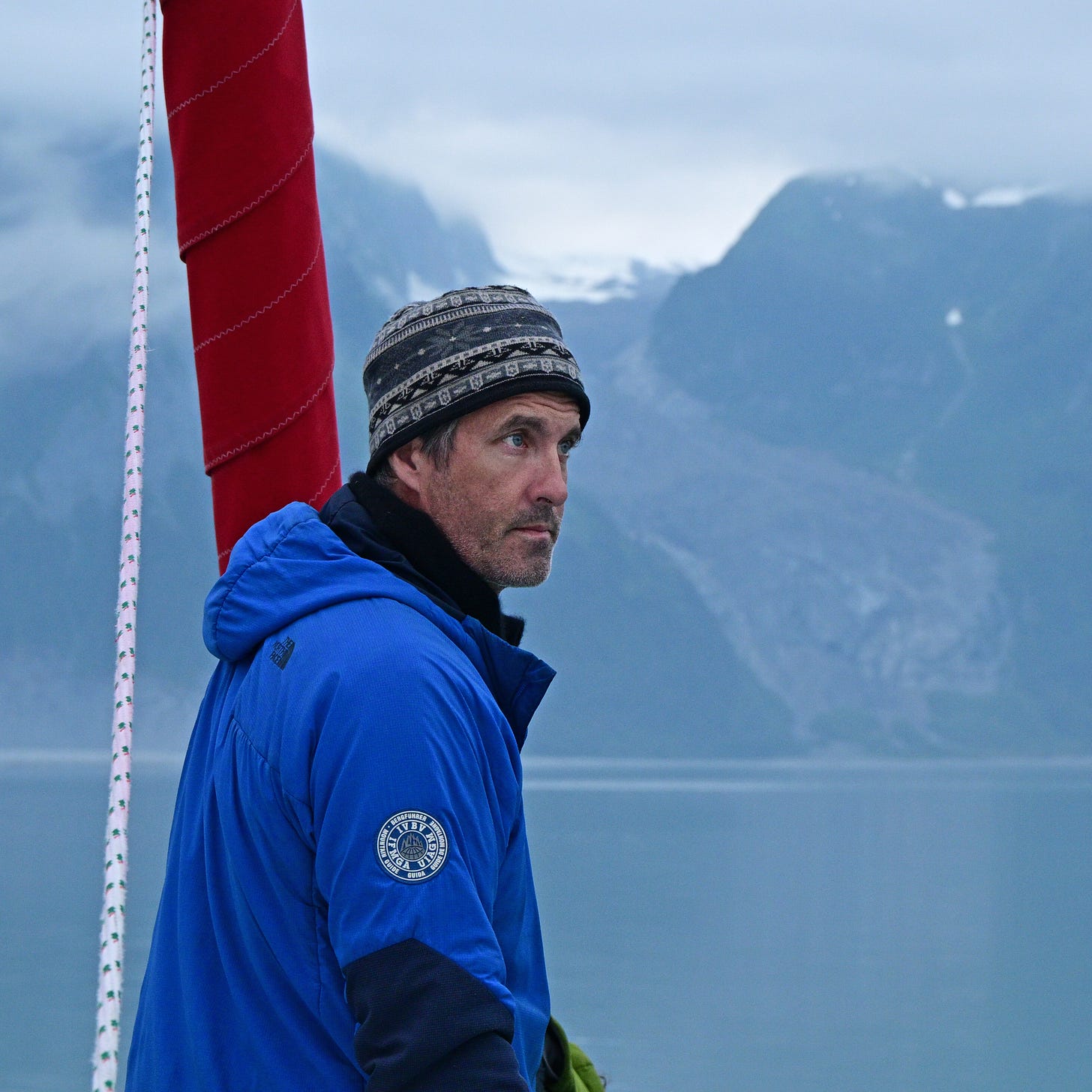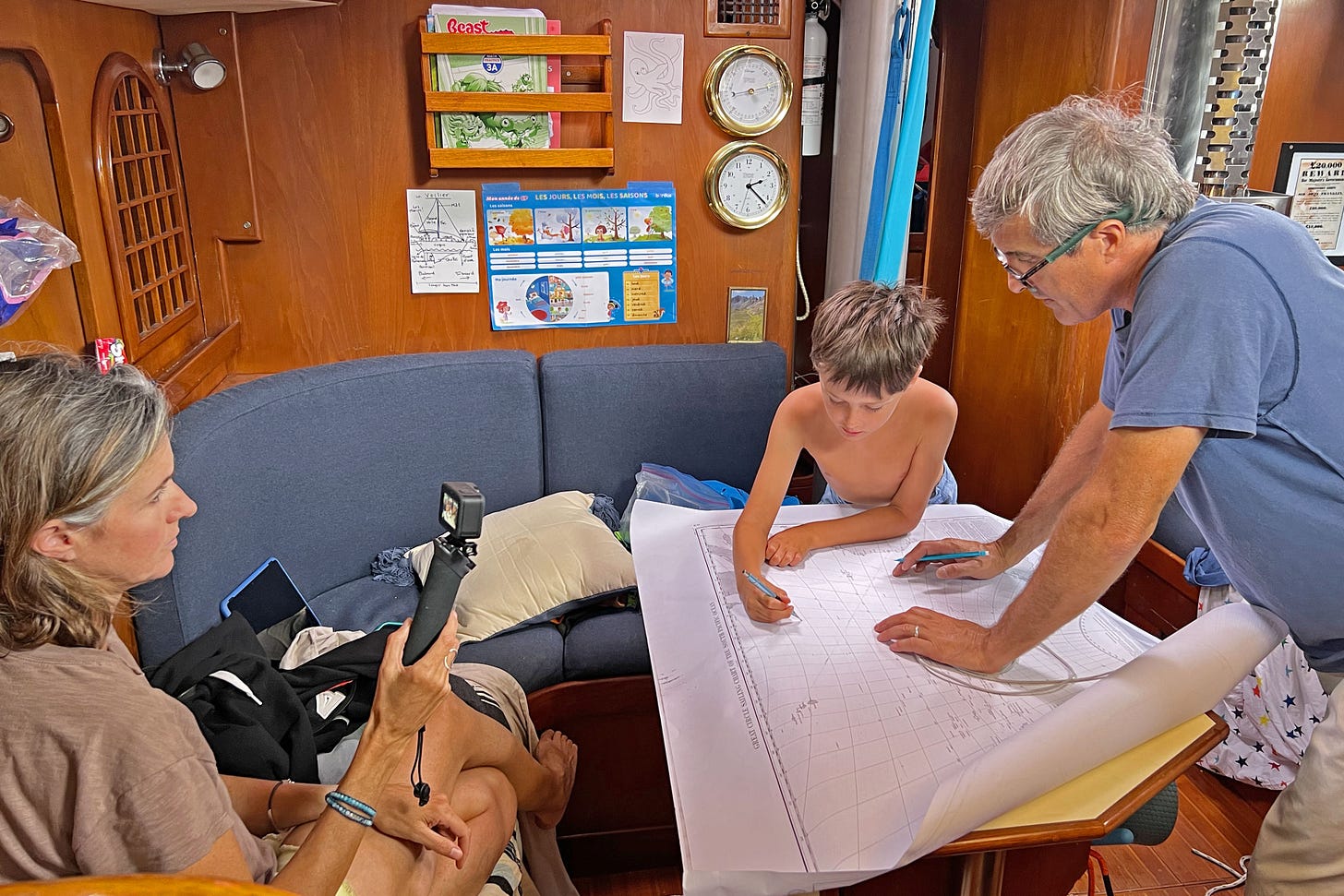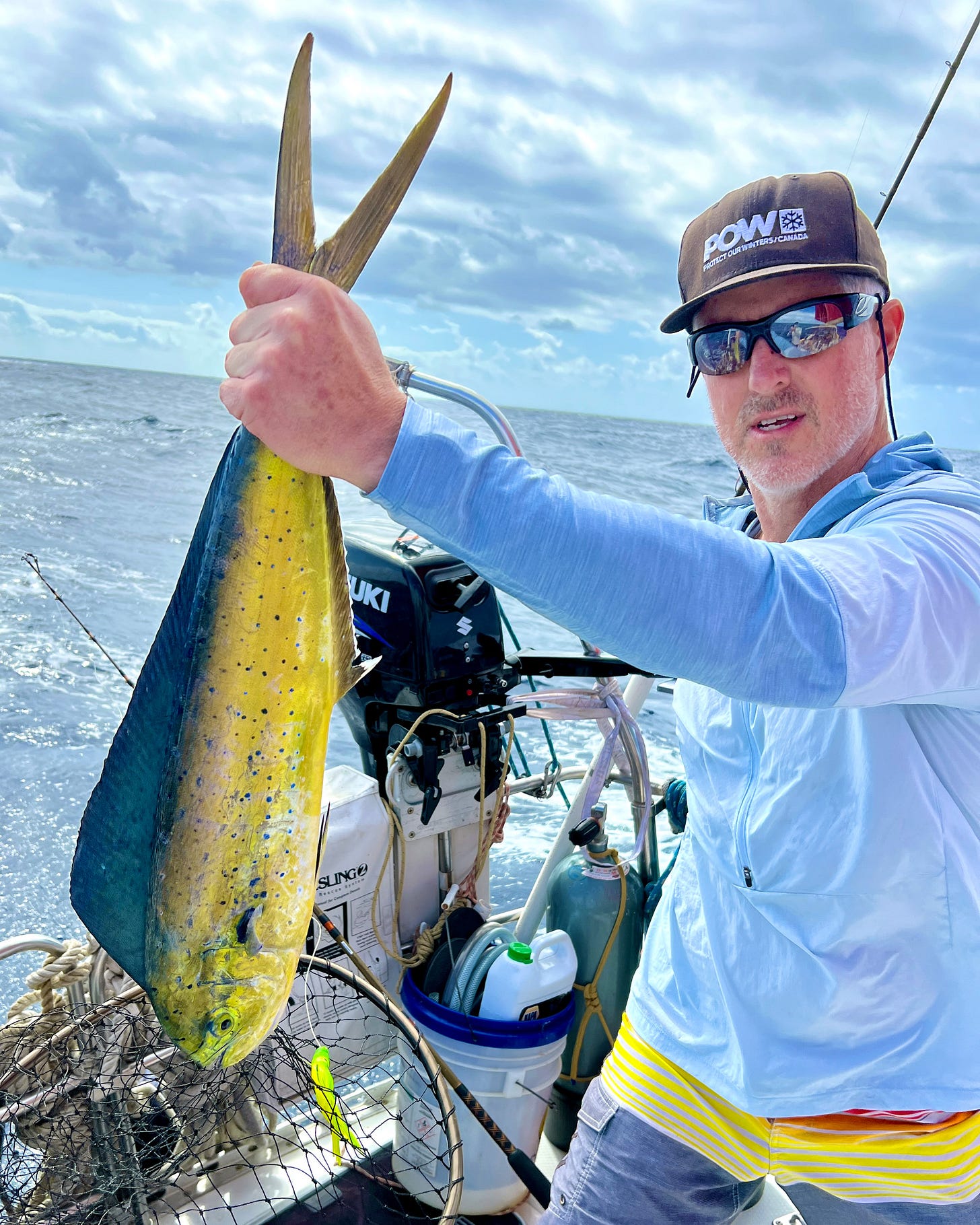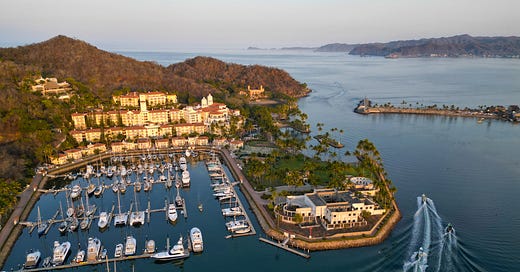Part Three - Chasing Dreams in the Pacific
Crossing an ocean wilderness with a climber, turned sailor.
If you read Parts One/Two of my stories from my times sailing on s/v Polar Sun (s/v is Sailing Vessel) you know that I have been having great adventures with my friend Mark Synnott from the Arctic to the Pacific. When finished in the Marquesas Islands, I will have sailed 7000 nautical miles with Mark over the past three years. The adventures, experiences and stories are amazing, and they will just keep getting better over time!

Note- As I finish writing this story, we are 90 miles from the equator, 2000 miles into our voyage. We will cross from the Northern to the Southern Hemisphere around midnight.
Mark Synnott is a professional climber, mountaineer, guide and best-selling author. The story of his voyage through the Northwest Passage was the cover story for the National Geographic Magazine in August of 2023, there is a Disney+ film of the expedition and now his book, "Into the Ice," has just been published by Penguin-Random House.

Mark and I have bonded tightly from our times together sailing the extremes of the planet. He calls me "his older brother he never had" in his new book which makes me very honored as he has spent some incredible times hanging off the world's most extreme mountain environments with a lot of cool dudes in his life.
An interesting event happened in Mark's career twenty years ago. He was on a writing and climbing assignment for The North Face, and National Geographic, traveling to Pitcairn Island, but there was a hitch. The only way to get there was by sailboat. Mark and his team led by photographer, and now Oscar winner, Jimmy Chin, met up with a captain, and a sailboat, based out of Tahiti. They then sailed to the remote Pitcairn Island for the climbing adventure.
The experience opened Mark's eyes wider, the seed was planted, and he determined that when his climbing days were winding down, he would transition from "climber to sailor." The name of his sailboat, Polar Sun, is derived from his most meaningful climb of his life, a sheer Arctic spire on Canada's remote Baffin Island. Sailing his boat through the Northwest Passage, the "Everest of Sailing," was the natural first voyage for Polar Sun.
The transition is now complete. Mark has been slowly introducing his wife, Hampton, and nine-year-old son, Tommy, to the cruising life during the past 1-2 years. Shorter, easier sails, and many fun stops have made them feel comfortable aboard. With the departure from the west coast of Mexico for the Marquesas Islands, they now begin a multi-year circumnavigation of the world for the next 3-4 years.

None of this is new to me however. I'm now the "old man of the sea" after my 34 years of sailing voyages around the world and over 70,000 nautical miles. That is why Mark contacted me in the first place when he was in the Arctic and needed some assistance to sail out of the Northwest Passage. I'm the most experienced American Arctic sailor. Like Mark, I had also been inspired to sail the oceans but by a different adventure.
As a teenager in Iowa, I had stumbled across a first edition of "Kon-Tiki" by Thor Heyerdahl, in my grandfather's extensive library. I read the book and scoured through the photos. The lightbulb of adventure went off in my head. Wow, these guys built a raft with a sail and floated across the Pacific Ocean to French Polynesia. Adventures at sea were now added to my daydreams as I would mow yards, shovel snow and spend drab days in Northwest Iowa growing up. My daydreams kept me alive and my inside fire burning bright.
Now, nearing the end of my sailing career, I get the chance to follow Thor Heyerdahl across the Pacific to strange, faraway lands and fulfill a boyhood dream. The circle is now almost complete.
I packed my gear and arrived at Barra de Navidad, Mexico (south of Puerto Vallarta) on April 13th with my sailing friend, Mark Johncox, from British Columbia. Boat chores and provisioning commenced immediately. We decided to shove off the dock at noon on April 15th and the 3000-mile sail to the French Marquesas was underway.
First, we had to motor off the coast in light air before we could catch the Northeast Trade Winds. These winds blow consistently clockwise around a large northern Pacific high-pressure system which then funnels the winds north and east across the Pacific of the Northern Hemisphere. We would ride these winds over a thousand miles before turning south into the heat of the "doldrums" and cross the Equator. Once in the Southern Hemisphere we would pick up the Southeast Trade Winds and sail them into French Polynesia.
Watch schedules were set for 3 hours on duty sailing the boat by yourself. We had four sailors each taking these shifts day and night for the entire voyage. We share cooking and chores aboard and help each other as we can. There is no stopping on a crossing. We go 24/7 until the voyage is completed with an ETA of roughly three weeks in length.

We are now two weeks out. Days have completely blended together. We've been averaging about 150-miles a day but are motoring into the Intertropical Convergence Zone (ITCZ, the doldrums) where light winds, rain, squalls and heat are the norm. And believe me, sailors do have soggy buns. It is sticky.
Some watches are very tedious, and time seems to stop, especially with the dreaded 1-4 am watch under dark skies. The nights can be scary and intimidating. Other watches have been magnificent with brilliant sunsets, azure, blue Pacific waters, star-filled nights, and the moon dancing across the endless ocean. You simply cannot fathom how big the Pacific Ocean is until you sail across it at the speed of a riding lawnmower.

Since Earth Day was last week, I thought I would share some thoughts from my journal on a particularly magnificent evening.
Tuesday, April 22nd. Northeast Trades. Pacific Ocean
"I did not factor into my thinking that I'd be sailing across a vast ocean wilderness on Earth Day. On watch tonight, standing at the wheel, I would lean back and gaze up at the masthead to observe our wind instruments. This is a vitally important check for wind angle when sailing dead downwind as one must maintain a very specific angle and "sail set" at all times.
The top of our mast was immersed in a heaven of countless stars and swaying back and forth between hemispheres as we traveled west nearing the equator. It momentarily felt more like being on a spaceship traveling through the galaxy than on a sailboat crossing an ocean. I could see both the Big Dipper and North Star of the Northern Hemisphere over my right shoulder while seeing the Southern Cross Constellation in the Southern Hemisphere over my left. This was absolute pure magic. We live on an amazingly beautiful planet which we take for granted every single day. Why have we humans so separated ourselves from the magnificence of nature, from this magic gift of life and the uniqueness of human consciousness that gives it all such deep meaning?
This is why I have chosen to become an explorer. Sailing across an ocean gives one the luxury of time to think, contemplate and reflect. There is no choice but to accept the natural elements daily and at the end of a long voyage, or expedition, there is a deep and profound sense of satisfaction and new perspective."
On this Earth Day the ocean also provided us with a beautiful Mahi-mahi (Dorado) today and we are going to have a wonderful coconut fish curry this evening. We thanked the ocean for providing us with a nourishing meal.

*Side Note. I want to say a quick shout out to Pope Francis following his recent passing. He had a great impact on my life. While not religious, I am spiritual. Pope Francis validated the idea that one can find spiritual calling in nature. This was revolutionary to me. No religious leader has ever brought climate science to the forefront like this pope. To paraphrase some of his thoughts, the planet is falling into disrepair and this represents a failure of human responsibility. He calls for a new era of global cooperation/solidarity with one another with the renewed belief that the earth is our home, there is no Planet B. Thank you Pope Francis.
The human race must find a way to embrace the science and let it guide us without politics. If not, we face extinction. Lead with science and give our environment time to repair and heal. In the process we can heal ourselves, trust in one another again and move forward together into a new era of global cooperation and environmental reconciliation, before it’s too late.
Another week and we will arrive in the French Marquesas Islands. There we will enjoy the beautiful anchorages, share stories, meet other sailors and stretch out the sea legs with long walks, swims and snorkeling.
French Polynesia and other island nations throughout the Pacific Ocean are in the crosshairs of climate change, and plastic pollution is also wreaking havoc throughout their marine environments. In my next installment, I will discuss many of these issues and what is being done to address the problems with creative solutions.
In the meantime, we sail on, pondering life, and chasing our dreams...
Have you explored the variety of writers in the Iowa Writers’ Collaborative? We are writers and creators from around the state and contribute commentary and feature stories of interest to those who care about Iowa. Please consider a paid subscription.





David— Logging some 70,000 miles under sail! What a feat for an Iowa boy. I was once asked how did an Iowan get so taken with off shore sailing to which I replied that it’s only logical when we Iowans are equidistant between the world’s two largest oceans with a Great Lakes kicker if you want a change and some cold fresh water. Godspeed to Polar Sun her brave crew.
Fascinating! I’m the opposite of an adventurer or explorer so
this is simply in another world.